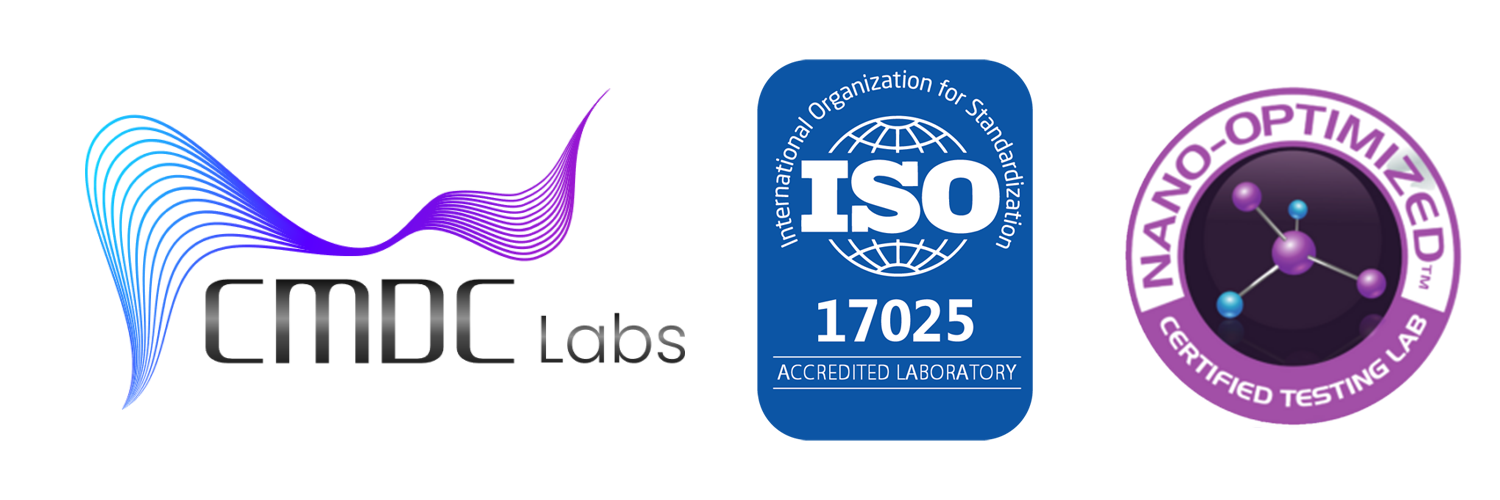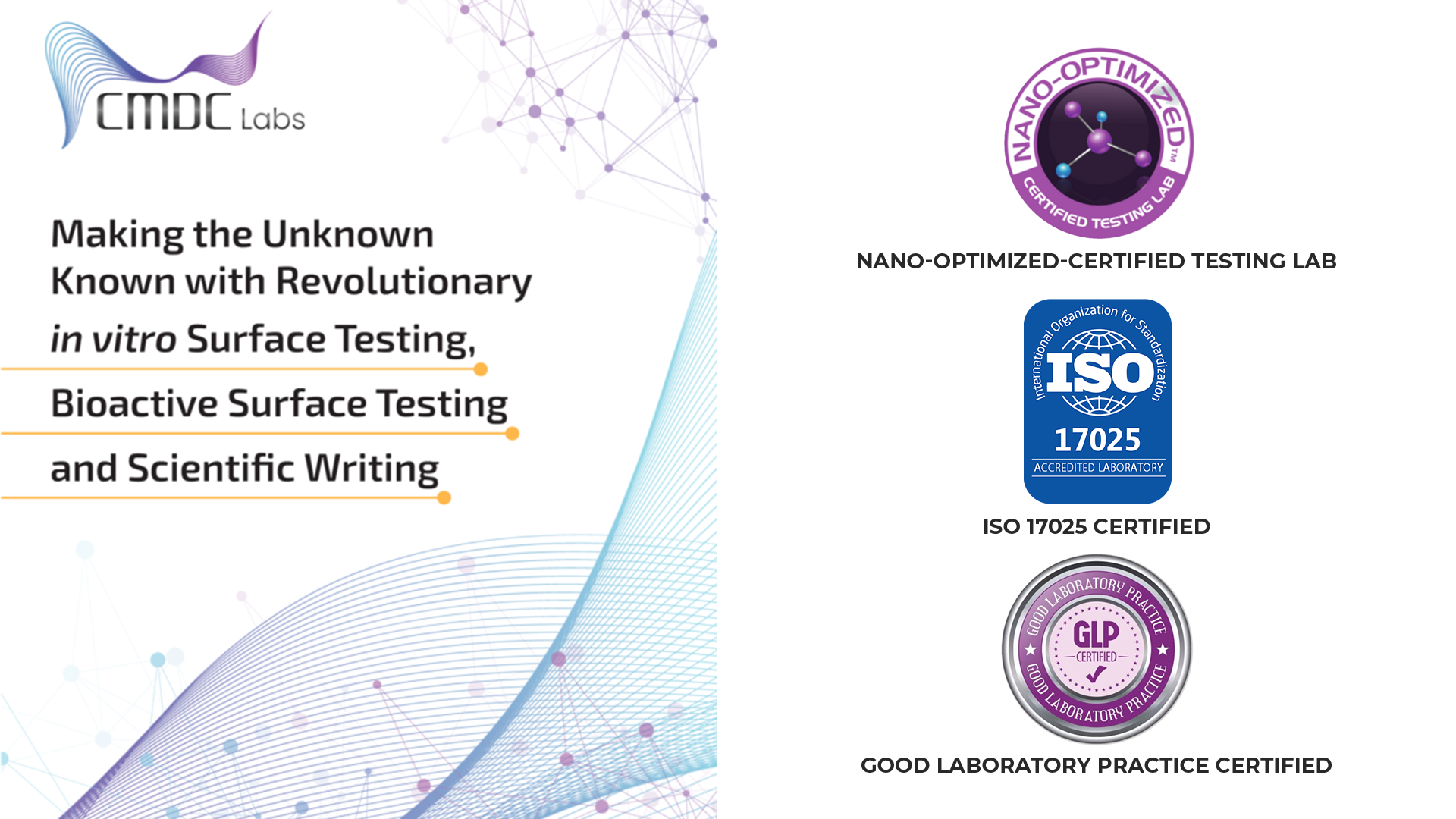Artificial intelligence (AI) is reshaping nearly every corner of healthcare — from diagnostic imaging and robotic surgery to remote patient monitoring and predictive analytics. Yet, as AI becomes embedded in more medical devices, regulators face a crucial question: how do you verify that these systems remain safe, effective, and fair once they’re in the real world?
The U.S. Food and Drug Administration (FDA) has started to answer that question with a landmark initiative: expanding its oversight to include real-world performance data (RWP) for AI-enabled medical devices. This move signals a profound evolution in how medical technologies will be validated and monitored — not only before approval, but continuously throughout their operational life.
For testing and validation partners like CMDC Labs, this shift represents both a challenge and an opportunity: to help manufacturers integrate real-world verification into their quality systems and to ensure that AI-driven devices stay compliant, consistent, and safe long after they hit the market.
The Rise of AI in Medical Devices: Promise and Complexity
Over the past decade, AI has moved from a futuristic concept to a practical foundation for medical innovation. AI-enabled systems are now used to:
- Detect cancers on radiology scans with precision rivaling human specialists.
- Predict heart failure or sepsis risk in hospitalized patients.
- Optimize insulin dosing through continuous glucose monitoring.
- Guide robotic-assisted surgeries with real-time adaptive feedback.
While these breakthroughs are transformative, they also introduce new forms of regulatory complexity. Traditional medical devices have static performance profiles — their safety and efficacy are tested once, validated, and approved.
AI devices, in contrast, learn, adapt, and evolve over time. They can change their behavior as they encounter new data or patient populations. This flexibility makes them powerful — but also unpredictable.
How can regulators ensure that a learning algorithm doesn’t drift away from its validated state?
How can manufacturers prove that an AI model trained on one dataset remains accurate and unbiased across diverse clinical settings?
These are precisely the questions driving the FDA’s push toward real-world performance monitoring.
The FDA’s Focus on Real-World Performance Data (RWP)
Traditionally, device evaluation relied heavily on premarket clinical trials — controlled studies designed to prove safety and effectiveness before commercialization.
But AI-based devices don’t fit neatly into that model.
Because algorithms may continue to learn after deployment (through adaptive or “locked” models that are periodically retrained), premarket data alone cannot capture how the device behaves under everyday conditions.
What the FDA Means by “Real-World Performance”
According to recent FDA guidance and public statements, RWP encompasses:
- Real-World Data (RWD): Information collected outside of formal clinical trials — such as hospital EMRs, registries, wearables, and patient monitoring systems.
- Post-Market Performance Metrics: Device usage patterns, false positive/negative rates, and outcome data across diverse patient groups.
- Algorithm Drift Detection: Evidence that the AI continues to perform within validated accuracy limits over time.
- Human Factor Data: How clinicians and users interact with AI interfaces under typical clinical pressures.
In short, RWP means validating devices not just in ideal laboratory conditions — but in the messy, variable, real-world environment where medicine actually happens.
Why It Matters for Manufacturers
For device makers, the FDA’s increasing emphasis on RWP means that validation is no longer a one-time event — it’s an ongoing obligation.
Key implications include:
- Continuous Performance Verification: Manufacturers must design systems to collect and analyze field data continuously to detect deviations in accuracy or reliability.
- Post-Market Change Management: Updates to algorithms, software, or hardware must be scientifically justified and traceable under Good Machine Learning Practices (GMLP).
- Risk Management Integration: AI risk assessments must extend beyond design and include real-world monitoring for bias, failure modes, or patient safety signals.
- Collaboration with Third-Party Labs: Independent testing laboratories play a critical role in verifying model performance, validating retraining cycles, and ensuring regulatory documentation integrity.
In this new paradigm, a strong post-market testing strategy is no longer optional — it’s a regulatory and commercial necessity.
How CMDC Labs Supports Manufacturers in the AI Oversight Era
At CMDC Labs, we help medical device manufacturers navigate this evolving regulatory landscape through scientifically rigorous, data-driven validation frameworks.
Our approach blends microbiological, mechanical, and algorithmic testing under the same umbrella of quality assurance — ensuring that every component of a device, from its physical construction to its AI logic, meets FDA expectations throughout its lifecycle.
Below are the key ways CMDC Labs supports AI-enabled device manufacturers in aligning with real-world performance standards.
1. Algorithm Validation and Verification Testing
The foundation of AI device reliability is algorithmic transparency and repeatable performance.
CMDC Labs assists clients in establishing and maintaining validated performance baselines through:
- Independent performance benchmarking: Testing AI outputs against gold-standard clinical or mechanical data.
- Reproducibility analysis: Ensuring the same input data consistently produces expected outputs.
- Cross-environment testing: Evaluating how algorithms perform across varied datasets, patient populations, or device configurations.
- Bias detection and correction validation: Using demographic and statistical analyses to verify equitable algorithm behavior.
By providing unbiased, third-party verification, CMDC helps manufacturers document algorithmic robustness — a critical requirement for both FDA premarket submissions and ongoing post-market reporting.
2. Real-World Data Simulation and Stress Testing
Before a device enters the market, manufacturers must understand how their AI performs under diverse, unpredictable conditions.
CMDC Labs conducts real-world data simulations to replicate complex operating environments. This includes:
- Testing performance under data noise, missing inputs, or atypical patient profiles.
- Evaluating the system’s ability to detect anomalies or manage uncertainty.
- Measuring false alarms and risk of user fatigue in clinical alert systems.
- Conducting stress tests that challenge the AI model’s boundary conditions to reveal potential failure modes.
These insights help clients preemptively adjust their systems — ensuring real-world readiness and reducing post-market surprises.
3. Lifecycle Performance Monitoring and Drift Detection
An AI model that works perfectly today might degrade tomorrow if not continuously monitored.
Changes in data distributions, sensor calibration, or software updates can cause algorithmic drift — subtle but critical performance degradation that may go unnoticed until it impacts patients.
CMDC Labs offers longitudinal performance tracking solutions:
- Setting up baseline reference datasets to monitor changes over time.
- Periodically validating outputs against ground truth data.
- Flagging deviations in accuracy, specificity, or sensitivity thresholds.
- Supporting documentation for post-market surveillance reports under the FDA’s real-world monitoring framework.
This ongoing verification ensures that devices not only meet initial standards but continue meeting them across years of use and thousands of data cycles.
4. Validation of Software and Embedded Hardware Interfaces
AI devices often combine software, sensors, and mechanical components, making integrated testing essential.
CMDC Labs conducts system-level verification to ensure that algorithmic logic aligns with physical device behavior.
Typical validation includes:
- Ensuring sensor data is accurately captured, digitized, and fed into AI models.
- Testing hardware resilience against electrical or environmental noise.
- Evaluating data synchronization between modules (important for multi-sensor AI systems).
- Verifying firmware and patch updates don’t alter algorithm output integrity.
Through this holistic approach, CMDC helps manufacturers eliminate silos between software, hardware, and biological testing — building a single, defensible body of evidence for FDA compliance.
5. Regulatory Documentation and Data Integrity
Under the FDA’s evolving digital device framework, data traceability and documentation integrity are as important as the tests themselves.
CMDC Labs provides full documentation packages that integrate seamlessly with clients’ Quality Management Systems (QMS):
- Validation reports including methodology, statistical justification, and acceptance criteria.
- Audit-ready data trails aligned with 21 CFR Part 11 electronic records requirements.
- Corrective and Preventive Action (CAPA) linkage showing how detected deviations are investigated and resolved.
- GMLP-aligned summaries for algorithm development, retraining, and revalidation cycles.
These records provide the transparency and traceability the FDA expects from manufacturers participating in real-world data monitoring.
6. Independent Corrective Action Verification
When performance issues arise — whether triggered internally or by FDA alerts — CMDC Labs supports independent CAPA verification testing.
We confirm that implemented process changes (e.g., algorithm retraining, calibration adjustments, or code modifications):
- Resolve the underlying root cause.
- Don’t introduce new performance risks.
- Maintain or improve model generalization.
- Are fully documented for post-market reporting.
This third-party verification protects manufacturers from unintentional noncompliance and ensures faster FDA resolution if a concern arises under the Early Alert or real-world performance monitoring programs.
7. Training and Continuous Improvement Support
AI device oversight is a rapidly evolving field, and manufacturer teams must keep pace with emerging standards like:
- Good Machine Learning Practices (GMLP)
- AAMI TIR34971 (Risk Management for Machine Learning in Medical Devices)
- ISO/IEC 23053: Framework for AI System Lifecycle Management
CMDC Labs offers technical consultation and tailored training sessions to help teams integrate these frameworks into their internal QA programs. This collaborative approach empowers manufacturers to take ownership of ongoing verification while relying on CMDC for independent validation and support.
The Strategic Advantage of Proactive Validation
Beyond regulatory compliance, continuous real-world testing creates tangible competitive benefits:
- Faster market access: Manufacturers with strong data pipelines and validation processes can update products more efficiently under the FDA’s proposed Predetermined Change Control Plan (PCCP).
- Higher trust among clinicians and patients: Verified transparency about AI performance fosters adoption and reduces skepticism.
- Reduced recall and reapproval risk: Detecting and correcting drift early prevents costly post-market corrections or warning letters.
- Better innovation feedback loops: Real-world insights feed directly back into R&D, improving next-generation products.
By embedding real-world validation into their quality systems, manufacturers future-proof their compliance strategies — and position themselves as leaders in responsible innovation.
AI and Regulation: Moving Toward Continuous Oversight
The FDA’s interest in real-world data reflects a larger movement across global regulators — toward dynamic oversight rather than static certification.
Similar initiatives are emerging in:
- The European Union: Through the MDR/IVDR framework’s emphasis on Post-Market Clinical Follow-Up (PMCF).
- Canada and the U.K.: Where regulatory sandboxes are enabling adaptive algorithm testing.
- Japan: Through guidance promoting periodic model updates under post-market validation.
For U.S. manufacturers, this means aligning early with systems capable of supporting continuous testing, algorithm auditing, and transparent data submission.
Conclusion: The Future of AI Validation Is Continuous
The FDA’s push for real-world performance data marks a turning point in medical device regulation. It recognizes that in the age of AI, safety and efficacy can’t be certified once — they must be proven again and again, under real clinical conditions.
CMDC Labs stands ready to support this evolution. Through independent algorithm validation, lifecycle performance monitoring, and regulatory documentation integrity, we help manufacturers stay compliant, transparent, and ahead of the curve.
Because in the new era of AI-enabled healthcare, regulatory excellence and scientific vigilance are the true differentiators.
Sources: InCompliance Magazine, FDA.gov (CDRH Digital Health Center of Excellence), ISO.org, AAMI TIR34971, USP, MedTech Europe

